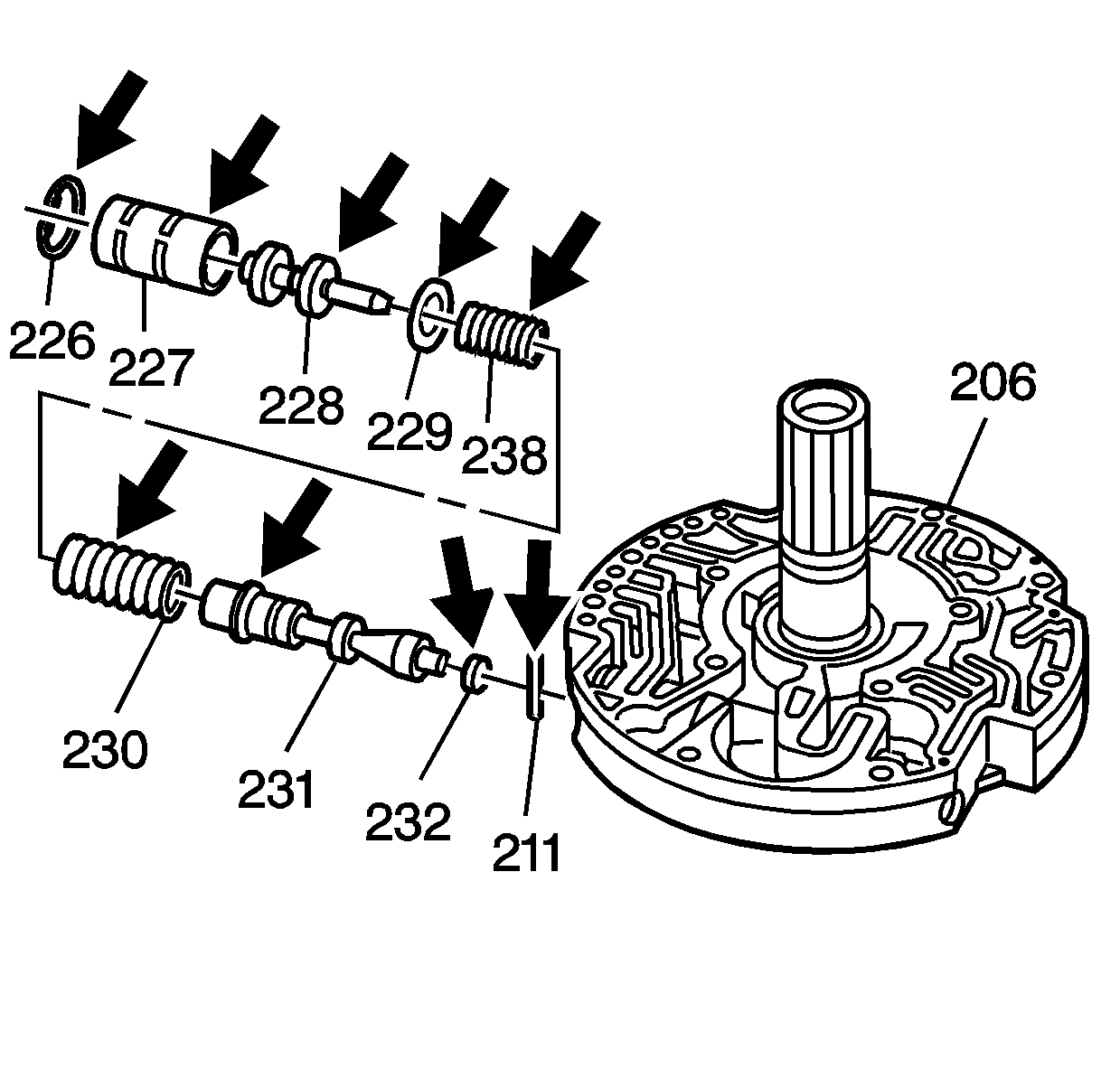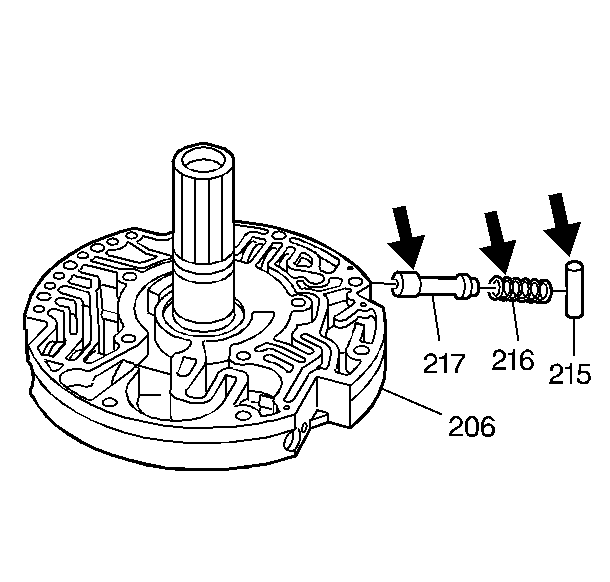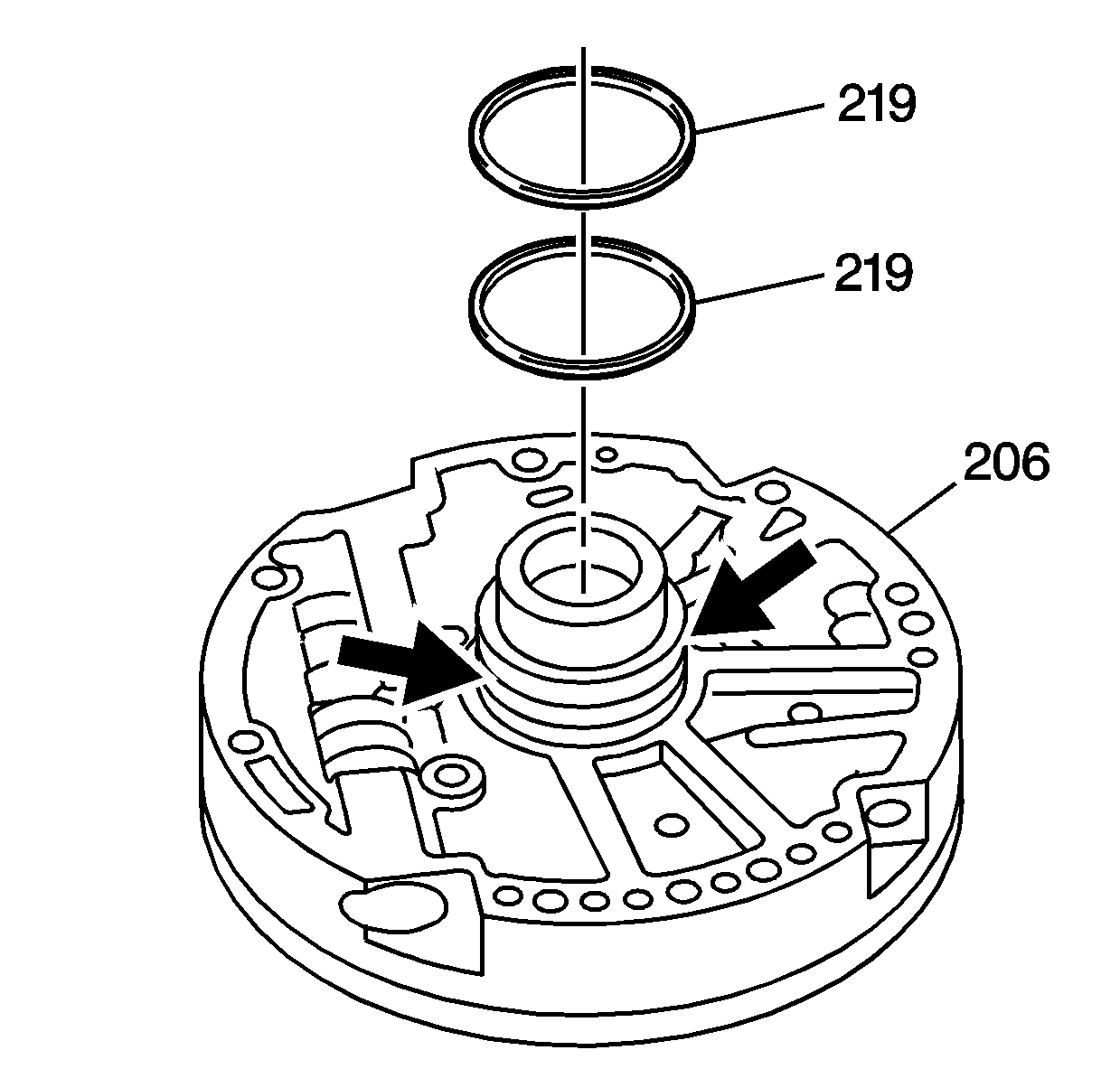For 1990-2009 cars only
- Remove the reverse boost valve bushing retainer ring (226) from the oil pump cover (206).
- Remove the reverse boost valve bushing (227).
- Remove the reverse boost valve (228).
- Remove the pressure regulator valve spring retainer (229).
- Remove the pressure regulator valve inner (238) and outer springs (230).
- Remove the pressure regulator valve (231).
- Remove the pressure regulator valve bore plug (232).
- Remove the pressure regulator valve bore plug pin (211).
- Inspect the pressure regulator valve components for chips, burrs, distortion, plugged oil passages.
- Remove the converter regulator valve bore plug pin (211) from the oil pump cover (206).
- Remove the converter regulator valve bore plug (212).
- Remove the converter regulator valve spring (213).
- Remove the converter regulator valve (214).
- Inspect the converter regulator valve components for chips, burrs, and distortion.
- Remove the TCC enable valve spring retainer sleeve (215) from the oil pump cover (206).
- Remove the TCC enable valve spring (216).
- Remove the TCC enable valve (217).
- Inspect the TCC enable valve components for chips, burrs, and distortion.
- Remove the TCC shift valve bore plug retainer ring (221) from the oil pump cover (206).
- Remove the pressure regulator (TCC shift) valve bore plug (232).
- Remove the TCC shift valve (223).
- Remove the TCC shift valve spring (224).
- Remove the TCC shift valve spring seat (225).
- Remove the TCC shift valve spring seat pin (211).
- Inspect the TCC shift valve components for chips, burrs, and distortion.
- Inspect the oil pump cover vent hole for blockage.
- Inspect the stator shaft splines for damage.
- Inspect the turbine shaft bushings (233, 234) for wear, and galling.
- Remove the overrun clutch housing oil seal rings (219) from the oil pump cover (206).
- Inspect the overrun clutch housing oil seal ring grooves for nicks, burrs, and debris.

Caution: Valve springs can be tightly compressed. Use care when removing retainers and plugs. Personal injury could result.




